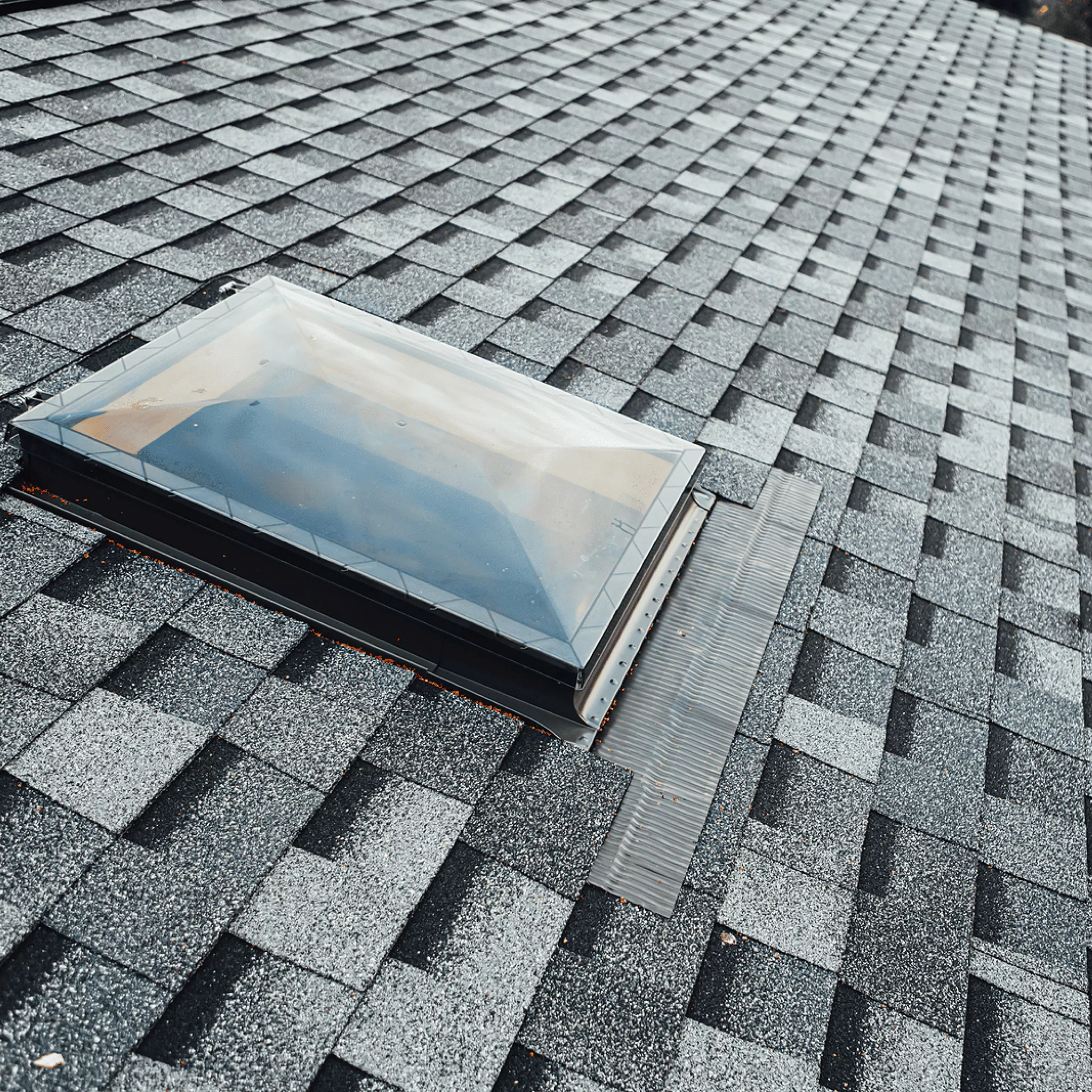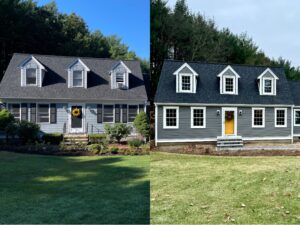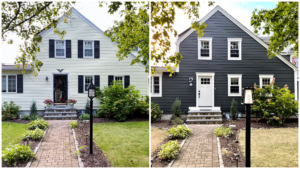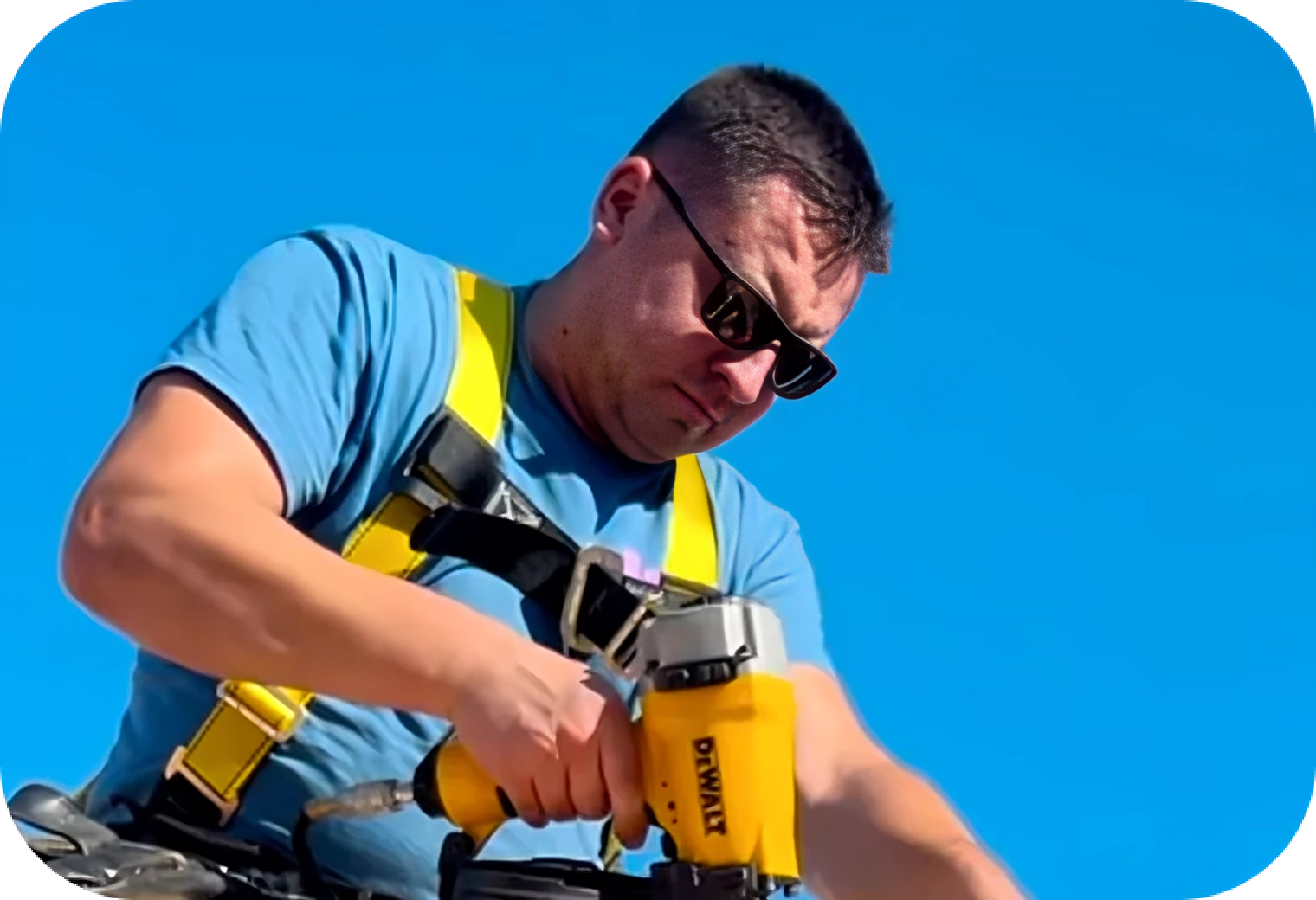

Project Manager at Plum ProExteriors
Why Choose Rubber Roofing? Advantages and Installation Tips

If you’re reading this, then the rumors about the rubber roofs have reached you. Rubber roofing material is actively gaining recognition in the market. More and more people are choosing rubber roof material for their flat roof homes after reviewing its characteristics. It’s not just a trend—it’s a durable, cost-effective solution that satisfies people’s expectations for better protection and long-term savings.
In this piece, we’ll clarify why roofing rubber is a smart choice for flat roof homeowners. We’ll delve into the reasons of the EPDM (ethylene propylene diene monomer) rubber roofs’ popularity. You can learn the specific advantages of the rubber roofing membrane and EPDM rubber roof specifically – from their durability to the low-maintenance appeal.
After reading our article all the way through, you’ll have a clear understanding of what is a roofing rubber and how it can assist you in long term.
Stay with us to discover why an EPDM rubber roof might be the best investment for your home.
What is rubber roofing?
Rubber roofing is a roofing option for the future of flat houses overall. It’s made from synthetic materials, most commonly EPDM, which is a strong and flexible rubber compound. What makes it differentiate from other options like asphalt or shingles is how it adapts.
One of the biggest advantages of rubber roofs is their ability to handle extreme temperatures. So, EPDM doesn’t just resist leaks or cracks. It adjusts to the changing environment, protecting your home as temperatures shift.

We also have to pinpoint the rubber roofing material’s exceptional ability to withstand extreme temperatures. EPDM rubber roofing is perfect for harsh weather, as it offers high resistance to moisture. Thanks to its high tensile strength, it is one of the toughest and most reliable roofing materials available now. Whether in freezing winters or scorching summers, the rubber expands and contracts without damaging its integrity, reducing the need for repairs.
Unlike rigid materials, rubber’s flexibility makes it perfect for roofs with tricky angles, bumps, or unique designs. It bonds well with various construction materials like brick and concrete, which makes it an ideal choice for the construction sector. This, in turn, fuels market expansion.
The EPDM market was valued at around USD 4.45 billion in 2023. It is anticipated to grow at an annual CAGR (compound growth rate) of 5.7% from 2024 through 2030.
As rubber roofing membranes are essential for leak prevention in reservoirs, rubber roll roofing also appears perfect for waste and water management facilities. If you are looking for a reliable and durable solution for your house, rubber roofing material will satisfy all your needs and expectations. Considering it can serve professional facilities perfectly, your home will be safe from dangers such as leaks, weather damage, wear, mold growth, UV exposure, punctures, heavy snow loads, and fire hazards.
Types of rubber roofing
Rubber roofing comes in various types. Each offers unique advantages, such as energy efficiency, ease of installation, and weather resistance. Whether you’re looking for an eco-friendly option or a rubber roofing material that can handle harsh conditions, there’s a type to fit your needs.
Let’s explore the different types of rubber roofing and what makes each one special.
1. EPDM rubber roofing

EPDM rubber roof is the superstar for flat homes. It’s a single-ply membrane known for its durability and flexibility. EPDM is available in black or white, and its ability to reflect sunlight makes it an excellent choice for energy efficiency. Installation is usually straightforward, making it a favorite among DIY (do-it-yourself) enthusiasts. You can even apply it to flat or low-slope roofs without worrying about leaks. EPDM roofs can last 30 years or more with proper maintenance.
2. Natural rubber membrane
Natural rubber membranes are crafted from the sap of rubber trees, offering an eco-friendly alternative to traditional roofing materials. One standout feature is their exquisite elasticity, which allows them to expand and contract with temperature changes without cracking or becoming brittle. This flexibility, combined with their superior resilience against UV rays, makes them an excellent choice for areas with fluctuating weather conditions.
3. Silicone rubber membrane
These membranes are renowned for their exceptional durability and flexibility. One of their most remarkable features is their ability to self-heal. Minor punctures and abrasions can mend themselves over time, prolonging the lifespan of the roof. Silicone membranes are also highly resistant to mold, mildew, and UV rays, making them ideal for hot and humid climates. They are highly flexible and can be installed over various substrates, including existing roofs.
4. TPO roofing
TPO (thermoplastic polyolefin) is another popular option for roofing. This type is known for its energy-efficient properties, as it often comes in bright white but still has many color options. TPO roofing is a great choice if you want to keep your home cooler in summer. Plus, it’s easy to install and can be welded at the seams, providing a strong bond that helps prevent leaks. It also has a strong resistance to punctures and tears, so it is a robust choice for roofs exposed to foot traffic.
5. PVC roofing
PVC (polyvinyl chloride) is similar to TPO, but has some distinct characteristics. It’s incredibly strong and resistant to chemicals and fire, making it suitable for commercial buildings and industrial applications. PVC is typically preferred for its durability in harsh environments. Just like TPO, it comes in a variety of colors, allowing for some aesthetic flexibility. Furthermore, PVC membranes can be recycled at the end of their life. It is among the ideal environmentally friendly options.
6. Rubber slate roofing
For those who want the look of traditional slate without the heavy price, rubber slate roofing is a choice. Made from recycled materials, it mimics the appearance of slate but is much more affordable. Plus, it offers the same durability and weather resistance as other rubber roofing options. This type is perfect for homeowners who value both style and functionality. Rubber slate is also easier to install than real slate. It is lighter and often features interlocking designs or pre-drilled holes that simplify the assembly process.
7. Modified bitumen
Though not purely rubber, modified bitumen roofs incorporate rubber into their composition. They are frequently applied using heat or cold adhesive and are ideal for low-slope roofs. This type can also withstand harsh weather conditions, being a practical choice for various climates.
Advantages of rubber roofing
Rubber roofing systems have apparent advantages to be installed whether in a private home or a professional facility. It is a versatile and cost-effective solution for any roofing need. Let’s dive into the advantages that make rubber roofing the go-to option for many.

Durability
Rubber roofing is incredibly tough, making it one of the most durable options on the market. Take the EPDM rubber roof, for example; it can last 30 years or more with proper care. This durability comes from its ability to withstand extreme weather conditions, including heavy rain, snow, and intense sunlight.
The material is designed to resist cracks, leaks, and UV damage, meaning your investment will hold up over time. Plus, it’s less likely to become brittle or break, even in fluctuating temperatures. This durability is crucial for homeowners looking for long-term protection.
Cost-effectiveness
When you think about roofing materials, the cost is a big deal. Rubber roofing systems are not just affordable to install; they can save you money in the long run. The initial investment for rubber roof covering is competitive compared to materials like asphalt or shingles. But it doesn’t stop there.
Thanks to their energy efficiency, especially in the case of a white EPDM flat roof that reflects sunlight, you can save on heating and cooling costs. Many homeowners notice a drop in their energy bills after installation. In addition, because they require fewer repairs and replacements, you’re saving even more cash over time.
Eco-friendliness
If you’re environmentally conscious, you’ll love rubber roofing materials! Many types of rubberized roofing material are made from recycled products, contributing to waste reduction. Plus, rubber roofs can be recycled at the end of their lifespan, further decreasing their environmental footprint. Using a rubber roof helps conserve energy and reduces your home’s overall impact on the environment. This eco-friendly approach aligns perfectly with the growing trend of sustainable living.
Easy installation
No one wants to deal with a complicated roofing project, right? That’s where rubber roofing shines. The installation process for EPDM rubber roofs is straightforward, often making it a favorite among DIY enthusiasts. It comes in large sheets, allowing for fewer seams and potential leaks. Many contractors appreciate how quickly rubber roofing systems can be laid down, which can save both time and labor costs. This ease of installation means you can enjoy your new roof sooner rather than later.
Low maintenance
Who has time for constant roof upkeep? Rubber roofs are incredibly low maintenance, allowing you to focus on more important things in life. They don’t require regular treatments or coatings like other roofing materials might.
The rubber roof material is resistant to mold, mildew, and algae, which means you won’t have to scrub or replace parts frequently. A simple annual inspection and occasional cleaning are usually all that’s needed to keep your rubber roofing in top shape. This convenience is a huge win for busy homeowners.
Versatility
Rubber roofing isn’t just for flat roofs. It’s versatile enough to be used on various roof types and structures. Whether you have a sloped roof or a unique architectural design, rubberized roofing material can adapt easily. It can even be used for additional structures like garages or sheds, making it a fantastic choice for anyone looking to unify their home’s look. You can choose different colors and styles, allowing for customization that fits your aesthetic preferences without compromising functionality.
Whether you’re looking for an easy installation or a low-maintenance option, rubber roofing material can meet all your needs. With the added versatility and cost-effectiveness, it’s no wonder more people select rubber roofs for their homes.
Visual appeal and customization options
Rubber for roof is not only a reliable choice in the realm of functionality, but also an enhancement to your home’s aesthetic appeal. It has a sleek, modern appearance. The smooth surface of a flat roof rubber provides a clean and sophisticated look that complements various architectural styles, from contemporary to traditional. Unlike traditional roofing materials that may fade or crack over time, rubber roofs maintain their appearance for years. As such, you can enjoy the fresh and inviting look of your home for years.
Though the standard EPDM rubber roof is initially aesthetically appealing, it can still be customized based on your preferences. Rubber roofing material is highly versatile. Customization doesn’t stop at color. Many manufacturers offer EPDM rubber roof systems in different thicknesses and textures, so you can select the best option for your specific needs.

Whether you prefer a matte finish or a glossy look, you can find a style that aligns with your vision for your home. This adaptability extends to the roof’s design. You can incorporate unique shapes or features that is pleasing to the eye and set your home apart from the rest.
nstallation tips
Whether you’re installing a rubber flat roof for the first time or simply making some repairs, getting it right is key to ensuring durability. It can seem a bit tricky at first, but with the right preparation and guidance, you’ll be able to tackle it with confidence. Let’s dive into the steps and what you’ll need to get the job done.
Preparing for installation
Before you begin, it’s important to prepare the surface where the rubber roofing materials will be applied. Make sure the roof is clean and dry. If there are any old materials or debris on the roof, remove them completely. It’s also a good idea to repair any damaged areas on the roof deck, as this will ensure a smooth application of the membrane.
Don’t forget about the weather. Rubber roofing is best installed on a dry day when temperatures are moderate. If it’s too hot, the rubber can stretch, and if it’s too cold, it can stiffen, making it harder to handle. Ideally, aim for temperatures between 40°F and 85°F (5°C to 30°C).
Tools and materials needed
Here’s what you’ll need for a successful installation of your EPDM rubber roof:
- Rubber roof membrane (cut to the size of your roof)
- Adhesive or bonding glue
- Seam tape
- Roller or brush for adhesive
- Utility knife
- Measuring tape
- Chalk line
- Roller for flattening out the membrane
- Optional: Heat gun for tight edges and seams
The right tools are crucial to avoid unnecessary errors. For example, using a chalk line ensures straight cuts, and a roller will help you flatten the membrane, preventing air bubbles.
Step-by-step installation process

Installing a rubber roof membrane might seem complicated, but it’s a straightforward process if done step-by-step. Here’s how to do it properly:
- Measure and cut the membrane: Start by measuring your roof and cutting the rubber roofing materials to fit the size. Leave some extra material around the edges for adjustments.
- Apply the adhesive: Lay down the adhesive onto the roof decking using a roller or brush and evenly cover the surface. Do only a section at a time to prevent the glue from drying too fast.
- Lay the membrane: Slowly unroll the rubber roof membrane onto the adhesive, making sure it stays straight. Use your roller to press down the membrane and smooth out any wrinkles or air bubbles.
- Seal the seams: Where the pieces of membrane meet, use seam tape to create a watertight bond. Thus, you prevent leaks in rainy or snowy climates.
- Trim the edges: Use a utility knife to trim any excess membrane. Make sure the edges are neat and fit snugly against any walls or raised areas.
- Secure the edges: Finally, use a heat gun to ensure that the edges and corners are tightly sealed. Especially in areas where the membrane wraps around structures like vents or chimneys.
Hiring a professional vs. DIY
Installing a rubber roofing yourself can save you money and give you the satisfaction of completing the project. However, if you’re dealing with a large roof, complex angles, or simply don’t have experience, it may be worth hiring a professional. DIY installations are great for smaller areas or rubber flat roofs, but professionals bring experience and can guarantee a longer-lasting result. For instance, an EPDM rubber roof by Plum ProExteriors will serve you for long. We ensure the proper use of materials and techniques, particularly with seam sealing and edge finishes, which can be tricky for beginners.
Common concerns and mitigations
Like any roofing solution, rubber roofing material comes with its share of concerns. Luckily, most of these issues have straightforward mitigations, making it a highly effective choice when installed properly. Let’s go over some common concerns you might face:

- Vulnerability to punctures: Regular maintenance is the key here. Check your roof for debris at least twice a year, especially after significant storms, to keep it clear. To stop additional damage, fix any tiny tears or punctures right away with liquid rubber or repair patches. Rubber roofing is very simple to fix, and by addressing small problems early on, you can prevent bigger ones.
- Seam separation over time: The solution here is using high-quality seam tape or bonding adhesive during installation. This creates a watertight seal that won’t easily degrade. Additionally, regular inspections and maintenance can catch minor seam issues before they become major leaks. Many modern rubber roofing alternatives include seamless designs to eliminate this difficulty entirely.
- Standing water on flat roofs: Installing proper drainage systems, such as scuppers or internal drains, can help with this. It ensures water flows off the roof rather than accumulating. Regular inspections after heavy rain can also help you catch potential drainage issues early. Some installers also recommend slightly sloping a flat roof to encourage better drainage.
- Heat buildup on hot days: Opting for a lighter-colored or white flat rubber roof can significantly reduce heat absorption. It reflects sunlight and keeps temperatures more manageable. Many rubber roofing materials, like EPDM, come in white. You can also apply reflective coatings that help further reduce heat buildup.
Conclusion
If you are looking for a long-term and reliable roofing solution, rubber flat roof can serve you a great deal. Homeowners can enjoy decades of peace of mind, knowing that their roof can handle extreme weather conditions without cracking, shrinking, or leaking.
Though some concerns, such as heat buildup and punctures, these issues are easily mitigated with proper installation and regular maintenance. With the added benefits of eco-friendliness, energy savings, and impressive advantages, roofing rubber truly stands out as a top contender for both residential and commercial buildings.
Plum ProExteriors are always here to provide you with a solution that corresponds to your expectations. Contact us to discuss your roofing solution now!






